Disclosure: Meeple Mountain received a free copy of this product in exchange for an honest, unbiased review. This review is not intended to be an endorsement.
Overview
In a game of Nova Luna, players take turns selecting tiles from around the outer edge of the game board, called the ‘Moon Wheel’, and placing them into their tableaus in order to try to fulfill various objectives printed on the tiles. Each time one of these objectives is fulfilled, the player places one of their markers on it and the first player to place all of their markers wins the game.
Nothing in an Uwe Rosenberg game is ever this easy, though. On top of trying to collect the tiles needed to finish their objectives, the players must also deal with the time track. Each tile collected will cause their time marker to move forward a number of spaces along the track. The player whose marker is furthest behind is always the next person to take their turn. So, good time management becomes critical.
This is a high level overview. If you’d like to learn how to play the game, continue reading. Otherwise, feel free to skip ahead to the Thoughts section.
New Moon
First, place the Moon Wheel into the center of the table and put the moon shaped marker (the game simply calls it the ‘Marker’ but I’ll refer to it as ‘the Moon’ in this review) above the new moon illustration on the Moon Wheel. Each player selects a color and takes the markers of that color. One of each player’s markers is placed onto the inner edge of the Moon Wheel (we’ll call this ‘the track’) directly beneath the new moon with the start player’s on top, followed by the next player in line directly beneath theirs, etc.
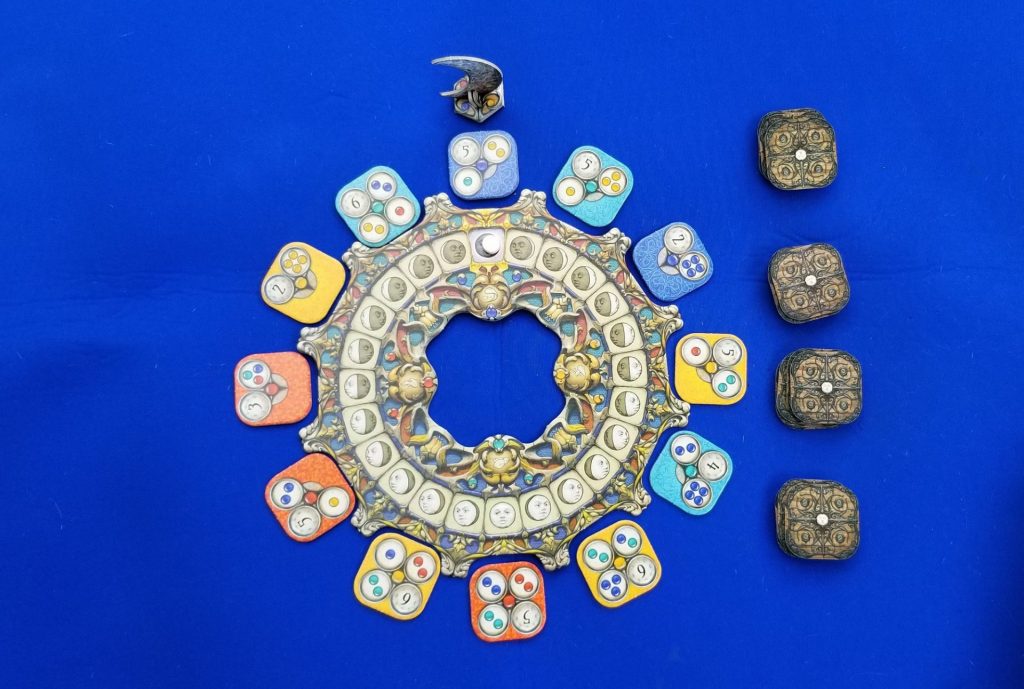
Next, all of the tiles are shuffled together and placed in face down stacks. Then tiles are drawn from the stacks at random and placed face up into the slots around the Moon Wheel. Now you’re ready to begin playing Nova Luna.
Going Through the Phases
The next person’s turn is always the person furthest behind on the track. If two or more people occupy this same space, the person whose marker is on top of the stack goes first. We’ll call this person the ‘active player’.
On their turn the active player will select one of the next 3 available tiles along the outer edge of the Moon Wheel*, place this tile into their tableau, and then move the Moon into the empty spot that was vacated by the selected tile. Then the player moves their marker along the track a number of spaces equal to the number printed on the selected tile. The next player in line goes. It might even be the same player! Anybody that has ever played Glen More or its successor will be familiar with this type of track movement.
*If only 1 or 2 tiles remain, the player can optionally refill the empty spaces first. If no tiles remain, then they must refill first.
From Celestial to Terrestrial
Once a player has selected a tile from the Moon Wheel, they add it to their tableau. But what does that mean exactly and how does it work?
Each tile is placed into a player’s tableau orthogonally adjacent to an already existing tile (unless it’s the very first tile, of course). Every tile in the game has 0-3 objectives printed on it that require the tile to be bordered by a certain combination of other colored tiles in order to complete. If placing the tile would complete any of the visible objectives, the player places one of their markers on top of each completed objective.

Some objectives are easier than others requiring only 1 or 2 sets of colors. Others, however, may require 3 or 4 of the same color. There are multiple ways to achieve the desired outcome. You could surround the tile with the required colors (which means that a tile requiring 4 orange tiles, for instance, would be bordered on all 4 sides by orange tiles) OR you could use adjacency.
Adjacency is achieved when 2 or more tiles of the same color are touching. In the previous example of the tile requiring 4 orange tiles to be completed, if there was only a single orange tile touching it, the objective could still be completed so long as there was a chain of at least 3 other orange tiles touching that one. Understanding and using adjacency to your advantage is key to doing well at Nova Luna.
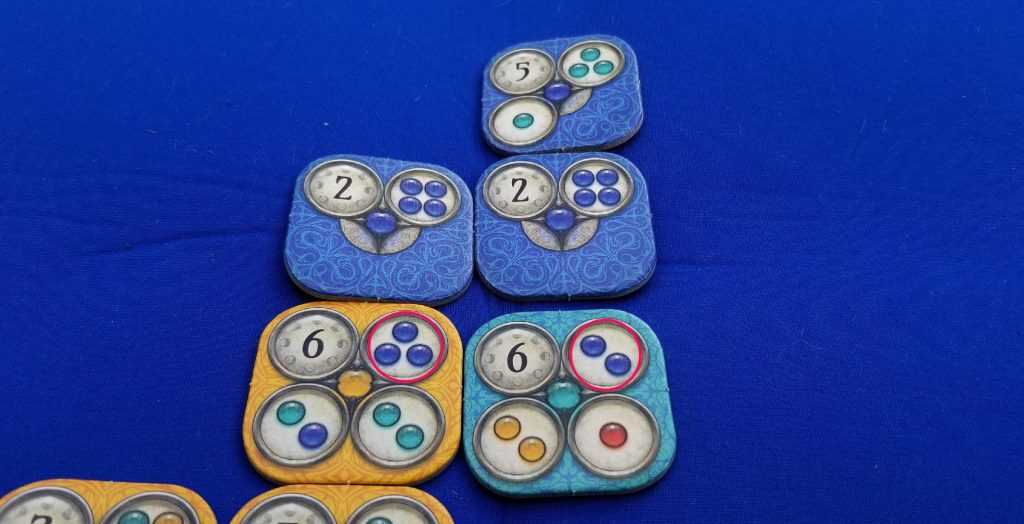
Thoughts
The first thing that caught my attention about Nova Luna, surprisingly, wasn’t the designer. It was the aesthetic. Nova Luna is a beautiful game. The box cover illustration and the Moon Wheel give me the impression of an old, intricately detailed tarot card. I couldn’t tell you why the decision was made to use the phases of the moon as its backdrop because the artwork is as thematic as this game gets. Bear that in mind. Despite its name and the gorgeous artwork, Nova Luna has nothing to do with the moon or its phases. It is an abstract racing game pure and simple.
Of course, finding out that the game was designed by Uwe Rosenberg didn’t hurt. If anything, Nova Luna has given me a newfound respect for Uwe. You see, in 2016, Dutch publisher Cwali released a game called Habitats by a designer named Corné van Moorsel. After playing the game, Uwe Rosenberg was inspired to create Nova Luna. So much so, in fact, that he gave Corné van Moorsel co-designer credit even though he didn’t have to. That’s a pretty classy move! Watching The Dice Tower’s Habitats review, I can certainly see the similarities. The adjacency rule and the way that the tile placements are used to complete objectives are the more obvious ones.
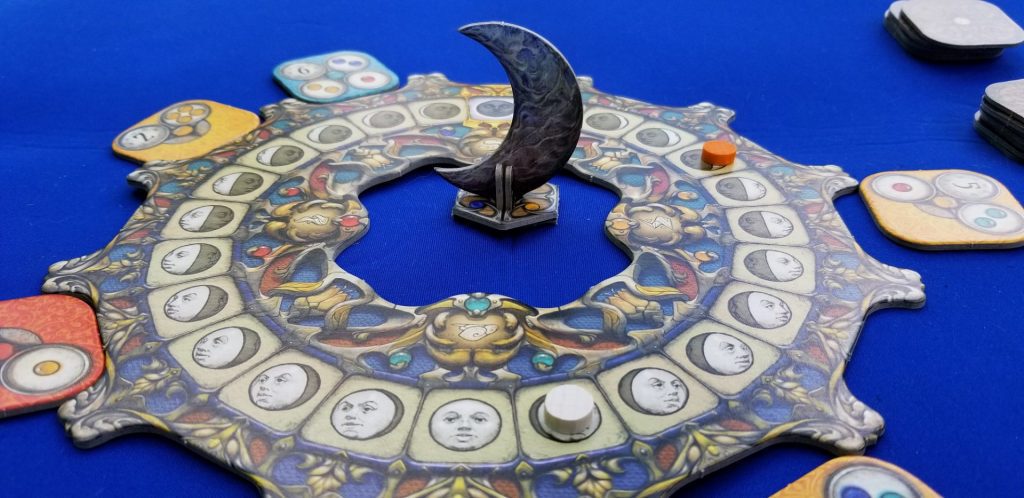
However, even though Nova Luna is heavily influenced by Habitats, it definitely stands on its own. Consider the Moon Wheel, for instance. This is an element taken directly from the Patchwork playbook**. Unlike Patchwork, though, where the time track functions as the game timer, the passage of time in Nova Luna isn’t as critical of an element. When a person reaches the end of the time track in Patchwork, their game is over. Not so in Nova Luna. No, in Nova Luna, the Moon Wheel functions primarily as a way to track turn order while also limiting your choices. But it also serves as a way to make those choices even more interesting.
**Patchwork is a 2-player game designed by Uwe Rosenberg. This review assumes you have some familiarity with it, but if you don’t, you can find more information about it here.
As I said before, Nova Luna is an abstract racing game. In Patchwork your decisions come down to largely whether or not you can afford a tile, where the tile will fit in your quilt, and how the unselected tiles might favor your opponent. And also consider that by selecting a tile that burns a lot of time, you could potentially allow your opponent to take several turns in a row. You have to weigh if it’s worth it, and if it is try to limit their choices or leave them with a bunch of bad ones. That element of planning also exists in Nova Luna and it gets even harder the more players that get added into the mix. In Patchwork, allowing your opponent to take one or two turns in a row probably won’t change things too much. In Nova Luna, allowing your opponents to take multiple turns in a row could cost you the game. Ideally you always want to remain in the back of the pack or as close to it as you can possibly get and, ideally, you don’t want the tiles left within the reach of your opponents to benefit them much. Figuring out how to accomplish this while also advancing your own goals presents interesting challenges each and every game.
Nova Luna is like a box full of jigsaw puzzles that are all pieces of a much larger jigsaw puzzle. Aside from the pasted on theme, I have nothing negative to say about this game. I love it. From Robin of Locksley to Nova Luna to Fairy Trails, it is obvious that Uwe Rosenberg is on a racing kick and I cannot wait to see what he comes up with next. There’s a good reason that Nova Luna was nominated for the prestigious Spiel des Jahres award. Give it a try and see for yourself!


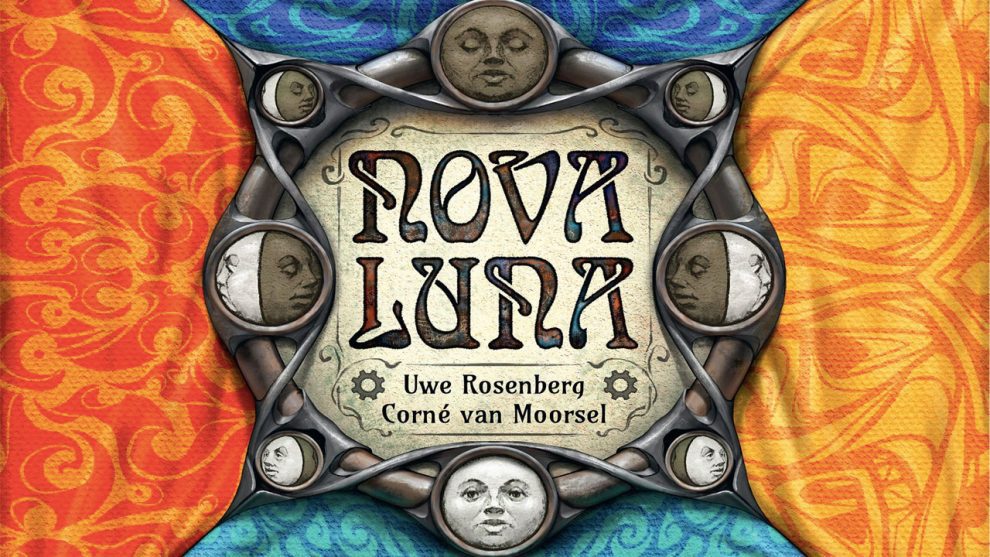



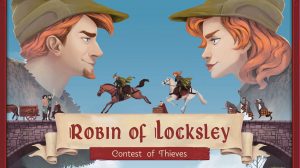
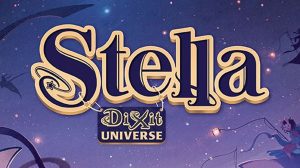




I have only one Uwe Rosenberg game. I may have to remedy that…